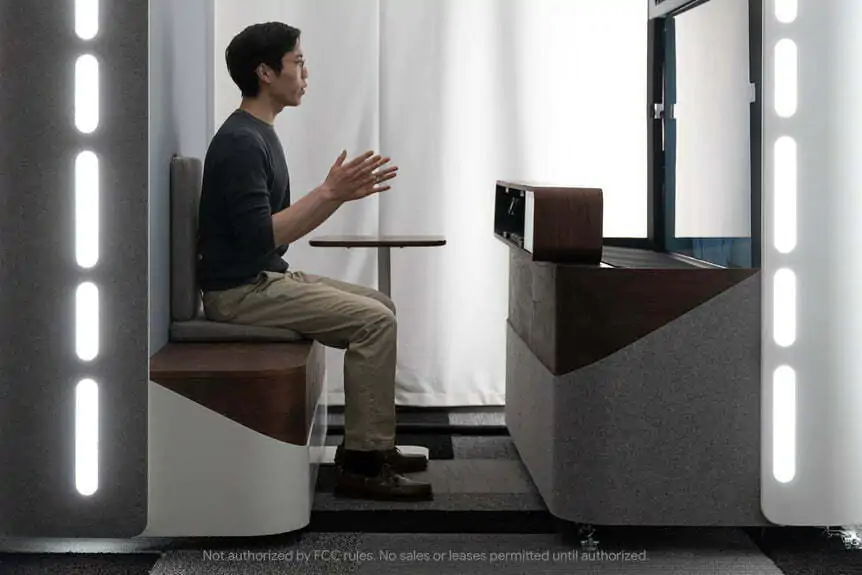I never review for money, nor for goods. At least, until today I have always refused. Why this premise? To tell you that Logitech will not pay me anything for this premise, which comes from my heart. I have some great mice and great keyboards from this brand. I'm very happy with it, really. At home I have a (wonderful) mechanical keyboard which isn't Logitech, it's true, but the rest is. A couple of days ago, however, the Swiss company took decisive steps to move away from the narrow range of accessories, presenting an ambitious prototype with a suggestive name: "Project Ghost". In short, a video call booth that aims to improve the experience of virtual conversations.

Project Ghost: Immerse yourself in the conversation
If your ears are ringing because this prototype reminds you Project Starline of Google (another "magic room" that allows you to video call a remote interlocutor, with the impression that he is right there sitting there with you), I tell you "No". I thought about it too, at first glance. But then I evaluated the differences, and there is a fundamental one: Project Ghost manages to create an image of the interlocutor similar to a hologram, and it does so without complicated combinations of sensors and cameras.
Somehow, in summary, Logitech already has the technology to make a system where you sit down, start a video call and find yourself sitting at the table with a guy who is on the other side of the world.
I haven't seen it live, I haven't tried it yet, but I would happily sit on that sofa. It sounds comfortable: Logitech says it's compatible with popular video conferencing platforms like Zoom, Microsoft Teams, and Google Meet, and I have no reason to doubt it.
How does a video call with Project Ghost work?
To visualize the person you are talking to, Logitech uses the combination of a display and a glass arranged at an angle: a technique also used for the "prompter" (teleprompter, for friends) and also known as the Pepper's Ghost effect.
The only peculiarity is that the camera is positioned behind the glass: an element that creates an extraordinarily realistic illusion of eye contact. Those who have already tried the device (it was presented this week in Barcelona, Spain, at the ISE, Integrated Systems Europe conference) assure you: a video call with Project Ghost is really similar to a live conversation.
How much? To the point of thinking that it could become a standard for companies and offices, evidently.

Video calls in holographic booths? I don't know, Rick. We see.
Logitech and Steelcase plan to launch Project Ghost within a year, also evaluating this first user feedback to decide on any changes in the design.
The price? The two companies assure that it will be relatively accessible. “Similar to what you would expect to pay for a video conferencing system plus the furniture in the room it takes place in.” I expect a figure closer to that of the soundproof cabins that are on the market today: I predict at least 4000 euros.
For this I reiterate that Project Ghost will certainly be aimed at a work environment, not at home, and used for services such as virtual assistance, counseling and education.

In conclusion
Holographic video calls have appeal for both end users and investors. We see this from the fact that in a short time, in addition to Project Ghost we have seen solutions such as the aforementioned Project Starline by Google, or the PORTL holographic booths.
The impression is that prices will slow down the advance of these solutions, but if they are developed it is certain: every now and then we will sit back and make a video call that will seem like anything but a remote call.


